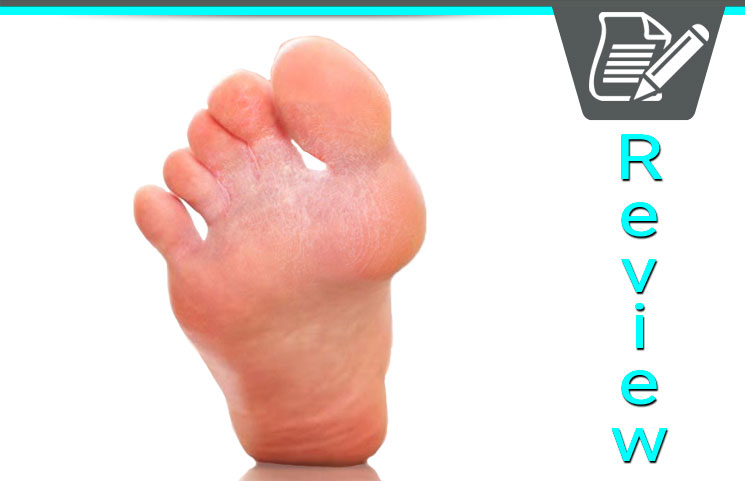
Athletes Foot Fungus Treatment Guide
Athlete’s Foot is a very common fungal infection, and you don’t even have to be an athlete to get it. This annoying infection occurs in boys, girls, men and women of all ages.
It’s a tough infection to get rid of, but thanks to stronger medications, getting rid of athlete’s foot isn’t as hard as it once was. Let’s look at the cause of athlete’s foot as well as how you can treat this annoying skin problem.
What Causes Athlete’s Foot?
The majority of cases of athlete’s foot are caused by a variety of fungi belonging to a group known as dermatophytes, which is the same group that also causes jock itch and ringworm. The fungi thrive in closed, warm, most environments, and they feed on keratin, a protein found in hair, nails, and skin.
In rare cases, athlete’s foot can be caused by non-dermatophytes, like yeast. However, there’s a good chance this group of fungi is responsible for your athlete’s foot if you have it.
Athlete’s foot can also be contagious. It can be spread through direct contact with the infection and by skin particles left on towels, shoes, or floors. Walking barefoot may increase the risk for developing athlete’s foot as well as if you have a weakened immune system.
Symptoms of Athlete’s Foot
The symptoms of athlete’s foot are very simple. The main symptom is an itchy, red rash between your toes. That’s typically a telltale sign you have athlete’s foot. If untreated, athlete’s foot may turn into cracked, blistered skin, which can become infected. A rash can also spread to the sides of your feet as well as your soles.
It is important you treat athlete’s foot as soon as you begin feeling itchiness or when you see redness between your toes. If athlete’s foot spreads to your toenails, it will become significantly harder to treat.
Treating Athlete’s Foot
How you treat Athlete’s foot really depends on how severe the infection has become. In most cases, you can simply treat athlete’s foot at home using an antifungal medicine to kill the fungus or slow its’ growth. Here are the most common ways to treat athlete’s foot:
— Nonprescription antifungal medications are typically used first. These include Lotrimin, Micatin, Lamisil, and Tinactin. These topical medications are applied once daily for two weeks and are the first line of defense against athlete’s foot.
— Prescription antifungals may be the next treatment if your body does not respond to topical medications, or if you have a severe infection. These medications are often applied to the skin again, and they include Naftin and Mentax.
— If that still doesn’t work, you may be given prescription oral antifungal medicine in the form of pills. These pills are only sued for severe cases, and they are expensive and require periodic testing for potentially serious side effects. However, these treatments have almost a 100% success rate.
Other Things to Know
— Athlete’s foot can come back at any time, although proactive measures can limit your risk for developing the condition once again.
— Always use treatment for a few days after your symptoms improve or after your athlete’s foot is completely gone. This will increase the chance that your athlete’s foot will not return for a longer period of time.
— If blisters form, you’ll need additional treatment to dry out the blisters. In some cases, your doctor may “pop” the blisters, which can be painful and scar your foot.
— You may need to go on an oral-antibiotic if you develop a bacterial infection.
Where to Buy Athlete’s Foot Treatments
If you’re searching for athlete’s foot treatments, then you’re in luck. Most big box retailers carry the most popular treatments for athlete’s foot. CVS, Rite Aid, Wal-Mart, and even your local pharmacy should carry brands like Tinactin and Lotrimin.
Look for the active ingredients clotrimazole and tolnaftate and you can be assured that the cream you are buying will target your athlete’s foot.
Best of all, treating athlete’s foot is not as expensive as you may think. Both Lotrimin and Tinactin cost around $12 at your local pharmacy, and you may only need one tube to eliminate your athlete’s foot.









I have been being treated for a yeast/fungus infection since April or May 2016 with little relief. Considering I have been on oxygen 24/7 the past 5 years and two hospitals and 3 rehabs since January this year with COPD, anxiety, rheumatoid arthritis & sleep aphynea, these diseases and breathing were treated first and some where along the line I got Athlete’s Foot on the bottom, sides and between toes and ringworm on both wrist’s. I was extremely happy to obtain all this valuable information and I will continue the doctor’s treatment but also now bring it to his attention that this should have healed sooner. I have additional medical factors that also contribute to the difficulty in curing these. I get several bacterial infection’s and my immune system is low from sickness and age as I just turned 70. Thanks again for the info!